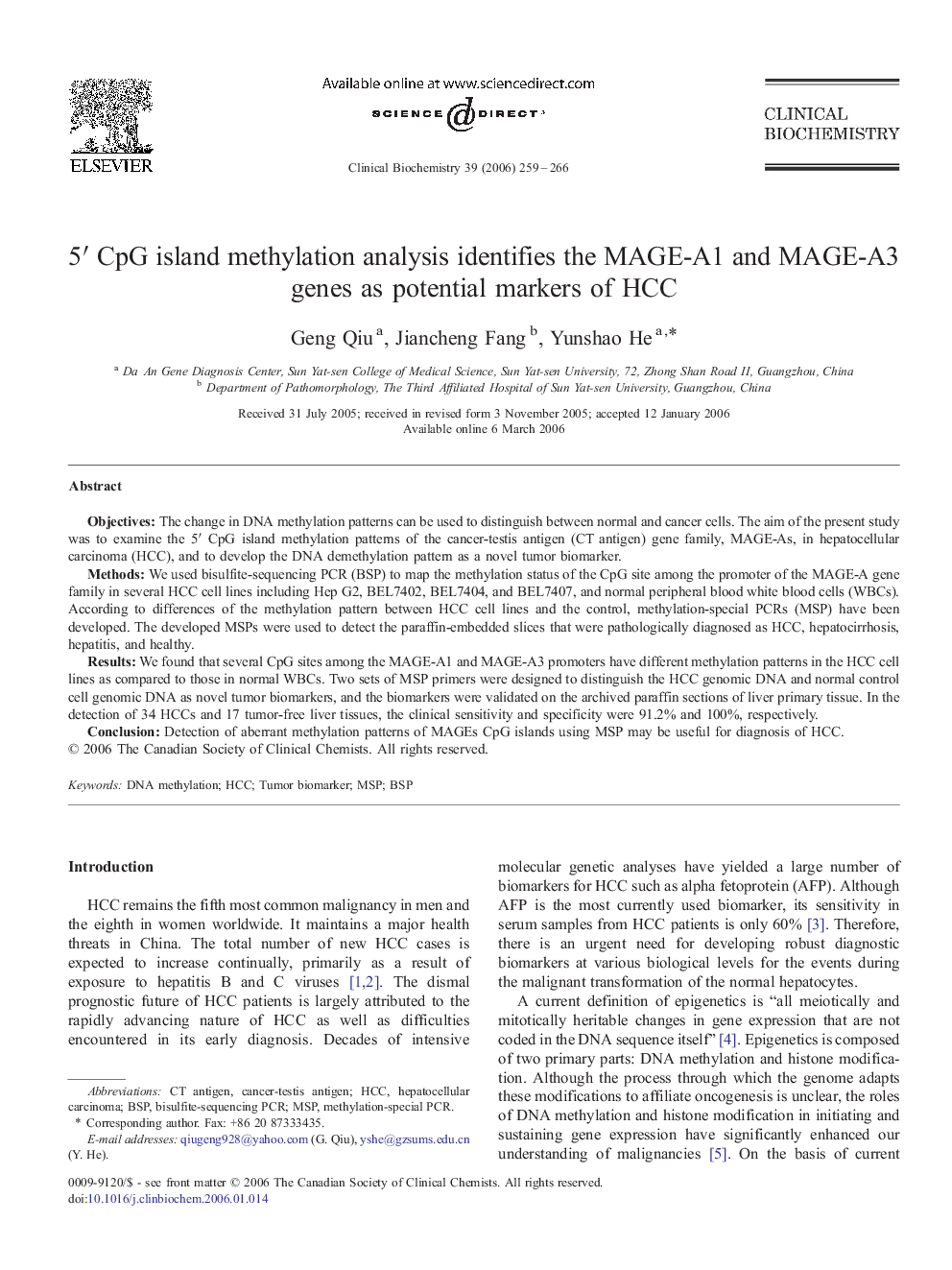| Article ID | Journal | Published Year | Pages | File Type |
|---|---|---|---|---|
| 1971754 | Clinical Biochemistry | 2006 | 8 Pages |
ObjectivesThe change in DNA methylation patterns can be used to distinguish between normal and cancer cells. The aim of the present study was to examine the 5′ CpG island methylation patterns of the cancer-testis antigen (CT antigen) gene family, MAGE-As, in hepatocellular carcinoma (HCC), and to develop the DNA demethylation pattern as a novel tumor biomarker.MethodsWe used bisulfite-sequencing PCR (BSP) to map the methylation status of the CpG site among the promoter of the MAGE-A gene family in several HCC cell lines including Hep G2, BEL7402, BEL7404, and BEL7407, and normal peripheral blood white blood cells (WBCs). According to differences of the methylation pattern between HCC cell lines and the control, methylation-special PCRs (MSP) have been developed. The developed MSPs were used to detect the paraffin-embedded slices that were pathologically diagnosed as HCC, hepatocirrhosis, hepatitis, and healthy.ResultsWe found that several CpG sites among the MAGE-A1 and MAGE-A3 promoters have different methylation patterns in the HCC cell lines as compared to those in normal WBCs. Two sets of MSP primers were designed to distinguish the HCC genomic DNA and normal control cell genomic DNA as novel tumor biomarkers, and the biomarkers were validated on the archived paraffin sections of liver primary tissue. In the detection of 34 HCCs and 17 tumor-free liver tissues, the clinical sensitivity and specificity were 91.2% and 100%, respectively.ConclusionDetection of aberrant methylation patterns of MAGEs CpG islands using MSP may be useful for diagnosis of HCC.
